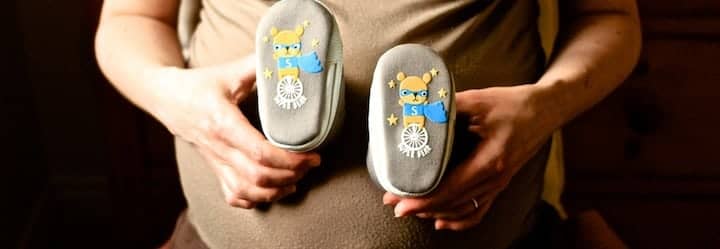Spina bifida means “split” or “open” spine in Latin. It is a birth defect in which a fetus’s spine does not form correctly during pregnancy. The spinal cord normally ‘zips’ closed early in pregnancy. If it fails to close anywhere along the spinal cord, the cord and nerves can be damaged and/or exposed. The severity of the damage depends on the size and location of the opening in the spine and whether the spinal cord and nerves are affected.
Most Common Types of Spina Bifida
- Myelomeningocele is the most severe form of spina bifida. It causes a visible sac of fluid connected to an opening in the fetus’s back (which contains a portion of the spinal cord), meninges (tissues that normally protect the spine), and possible nerve damage. There may be several impacts, including loss of feeling, immobility of the legs and feet, and/or hydrocephalus, which is a buildup of cerebrospinal fluid in and around the brain. Repair surgery often happens soon after birth.
- Meningocele involves a sac of fluid, similar to the sac formed with a myelomeningocele; however, the spinal cord is not located in the sac. The sac can form at the neck, back, or base of the head. It often causes little or no nerve damage, and the severity of disabilities are generally minor. Treatment may include repair surgery within the first few months of life.
- Spina bifida occulta is the mildest type of spina bifida. In this type, there is an opening in at least one of the vertebrae, but the spinal cord, nerves, and skin are unaffected. Some people refer to it as “hidden spina bifida.” It usually causes no disabilities and is often undetectable without X-rays.
Causes of Spina Bifida
- Folic acid, or vitamin B9, is important to a fetus’s health. It plays a role in cell growth and development, as well as tissue formation.
- If a pregnant woman has low levels of folic acid in her blood early in pregnancy, this can increase the risk that her fetus will develop spina bifida. Unfortunately, a pregnant woman would be unlikely to know that she has low levels of folic acid. Doctors strongly suggest taking folic acid as part of a prenatal vitamin before conception and every day during pregnancy.
- A high fever during early pregnancy can increase the risk of spina bifida. It is important for women to protect themselves from getting sick by limiting their exposure to infectious agents. It is good practice to wash hands regularly and keep hands away from the nose, mouth, and eyes. If a woman does develop a high fever early in pregnancy, she should contact her doctor immediately.
- Exposure to the drug valproic, used to control seizures in people with epilepsy, can increase the risk of spina bifida. If a woman uses this medication, she should discuss the risks and benefits with her doctor before pregnancy and whether other medications might work to control seizures.
- Exposure to aromatic solvents (found in paints), chlorinated solvents (found in hot tubs and pools), and Stoddard solvent (found in paint thinner) may cause increased risk of spina bifida. It is best to avoid these substances as much as possible. If they cannot be avoided, take protective measures, such as wearing gloves and masks.
Screening and Diagnosis
- Alpha-fetoprotein (AFP) is a protein that all fetuses make. It can be detected in a mother’s body at various levels throughout pregnancy. An AFP test measures the level of AFP in bodily fluid, often a pregnant woman’s blood sample. If an extra opening in the fetus exists, more AFP may enter the mother’s bloodstream, elevating her blood AFP level. A high level of AFP in the mother’s blood means there is an increased chance the fetus may have spina bifida. However, this is only a screening test and does not mean that the fetus has spina bifida.
- If an elevated AFP level is detected, additional testing, such as an ultrasound and/or an amniocentesis, may be recommended to gather more information and clarify risk.
Reducing Risk
- Women who may become pregnant should eat a diet rich in folic acid. In the United States, many foods are fortified with folic acid to reduce the incidence of spina bifida. Foods that are high in folic acid include leafy vegetables, citrus fruits, beans, and whole grains.
- Women who are or are trying to become pregnant should discuss the use of a supplement that contains folic acid with their doctor. There has been discussion about which is better for pregnancy: folic acid or folate. Folate is naturally occurring. Folic acid is naturally occurring or chemically synthesized. The body may absorb folic acid better; however, there is minimal research on which is better to take during pregnancy. Questions related to which supplement is best should be discussed with your doctor.
- Women should avoid known risk factors, such as the medications and solvents described above, when possible. Always discuss medication management with a physician before making changes.
Additional Resources
CDC Spina Bifida Homepage
KidsHealth.org
Spina Bifida Association
MedlinePlus

